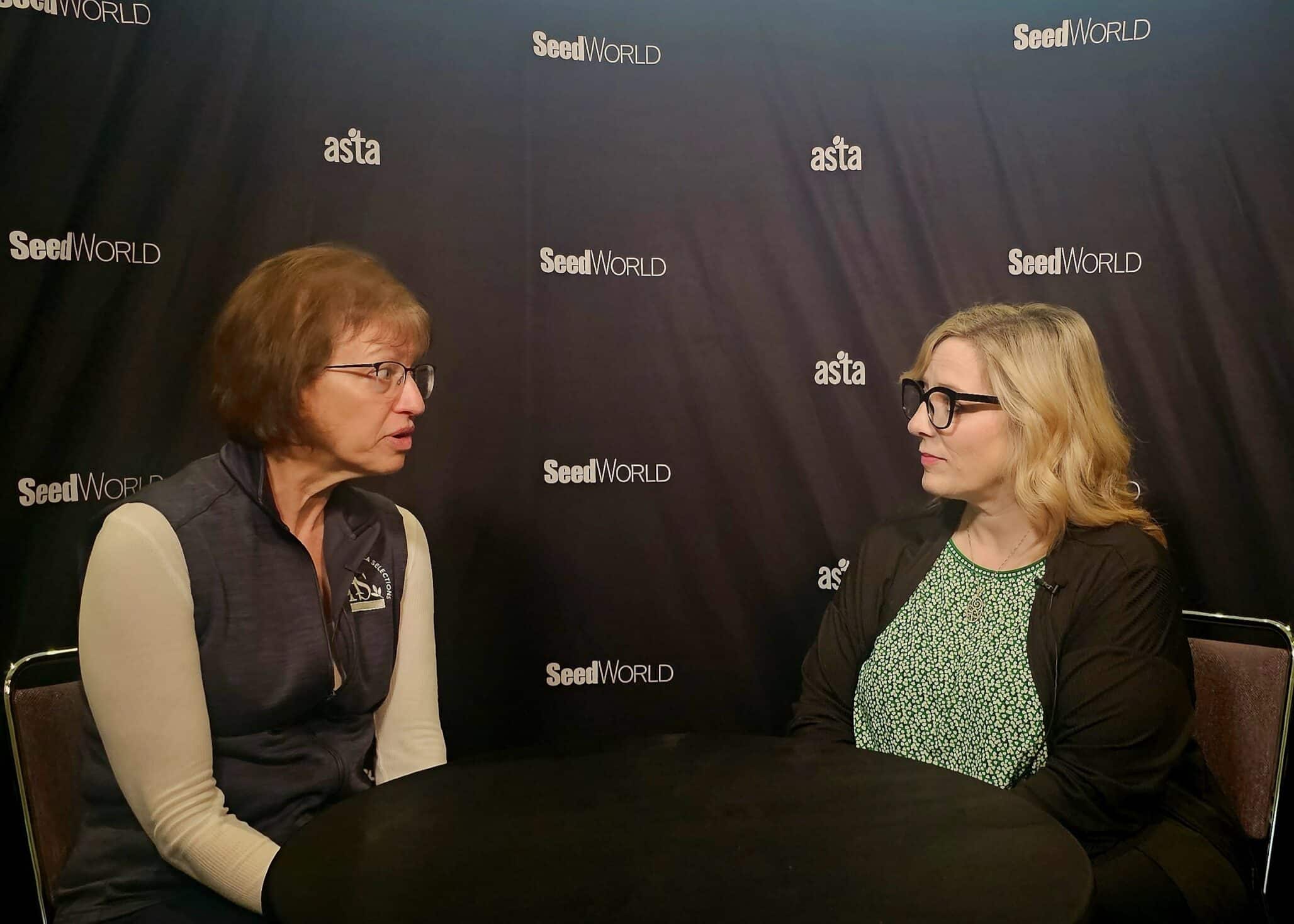
The flower breeding industry must walk a fine line when it comes to not overwhelming customers with information.
For many flowers are a fun and beautiful way to spruce up an outdoor or indoor space. When buying flowers consumers usually are on the lookout for a plant that catches their eye and is meant for their growing conditions. However, there’s a lot more to the flower world than meets the eye.
Plant breeders are “putting a lot of time and effort and resources into making sure that their products when they get in the gardens are going to grow well,” Diane Blazek, executive director of the National Garden Bureau and All-American Selections, says during the June 21 episode of Seed Speaks. “Companies like these are really making all of our home gardens look much better.”
Flower companies consider a wealth of factors when it comes to breeding new plants. From disease resistance to drought tolerance to colour, breeders weigh each option carefully as they work to bring better flower options to consumers.
“We’re trying to breed a universal profile as hard as of an achievement as that is, and we’re also evaluating our genetics around the world in order to validate that before it goes to market. And then of course, if there is a product that is really regionally specific in the market demands that we do approach things from a regional aspect as well,” Ryan Hall, head of Syngenta Flowers for the Americas, explains during the episode.
Hall adds plant breeders are constantly working to make flowers that are more reliable, will last longer and thrive in more environments. These innovations happen slowly and are spread out over 10, 20 or more years. The bottom line is that the flowers people buy today aren’t the same as the flowers they bought 20 years ago.
“A lot of people don’t understand in a lot breeding, because they haven’t been exposed to talking to breeders, that it can take years and years to bring products to market,” Lisa Lacy, director of product management for PanAmerican Seed, says during the episode. “In the breeding realm it’s trialing, its creativity, its science, but it’s also just patience and time.”
Another important aspect of flower breeding is disease resistance. Hall explains there’s multiple tools breeders use to do this work, but the preferred way is to breed the resistance into the flower’s genetics.
“We always have to stay ahead of the disease … diseases evolve, and they get more sophisticated to fight to survive. So, the main thing is we constantly have to, once we breed for resistance, you have to stay on top of it, you cannot basically say I’m done,” he says.
In the flower world, it’s not just important to breed for disease resistance but also to make sure hobby gardeners buying plants are aware of phytosanitary risks. These can include disease risks for commercial crops and warnings about invasive species.
“What we try to do is educate gardeners on what is happening and what we’re hearing from the industry. Some of it gets so complex that we decide we’re not even going to talk about that issue. But for the most part, if the industry, our boards and our committees, feel like it’s something to put out there to gardeners then we will,” Blazek says.
She adds they also try to encourage gardeners not to be afraid of trying something new.
“If you go to your local garden retailer and you see a new series — try it. There is a really good reason why that retailer, why that grower, why that breeder has made it available to the market,” Blazek says.











